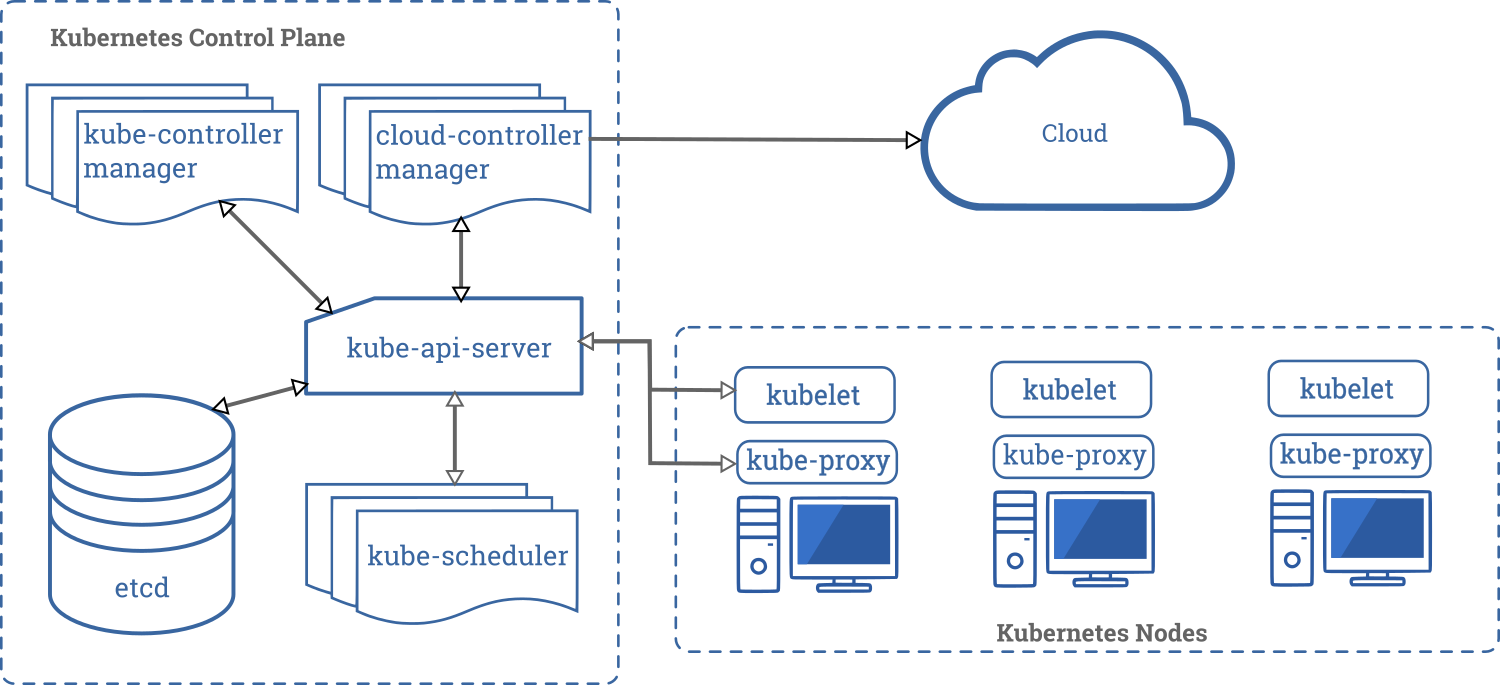What is Kubernetes?¶
Kubernetes, AkA k8s.Kubernetes, is an Production-Grade Container Orchestration System. It can automating deployment, scaling, and managing containerized applications.
What Kubernetes can do?¶
- Service discovery and load balancing
- Storage orchestration (automatically mount a storage system)
- Automated rollouts and rollbacks
- Automatic bin packing
- Self-healing
- Secret and configuration management
- etc
Kubernetes Clusters¶

Master node:
API will access k8s master and k8s will route the request to node.
 )
)
API Server¶
kube-apiserver is a component of the Kubernetes control plane that exposes the Kubernetes API.
Scheduler¶
kube-scheduler control plane component that watches for newly created Pods with no assigned node, and selects a node for them to run on.
controller and kube-controller-manager¶
- controller: Control loops that watch the state of your cluster, then make or request changes where needed. Each controller tries to move the current cluster state closer to the desired state.
- Node controller: Monitor nodes. Noticing and responding when nodes go down.
- Endpoints controller: Populates the Endpoints object
- Replication controller: Responsible for maintaining the correct number of pods for every replication controller object in the system.
- Service Account & Token controllers: Create default accounts and API access tokens for new namespaces.
POD And Nodes¶
Pod¶
Kubernetes created a Pod to host your application instance. A Pod is a Kubernetes abstraction that represents a group of one or more application containers (such as Docker or rkt), and some shared resources for those containers. Those resources include:
- Shared storage, as Volumes
- Networking, as a unique cluster IP address
- Information about how to run each container, such as the container image version or specific ports to use
Pod is a virtual machine to host docker containers/applications
Pods overview
Normally, we group containers that logically coupled together in a Pod. But in most case we run a single container in a Pod.
Node¶
A Node is a machine that host Pods.

kube-cluster¶
A cluster of Nodes
Labels and Selectors¶
Labels are key/value pairs that are attached to objects, such as pods.
key=value
selector: used to filter pods
Pod management¶
ReplicationController¶
Manage and maintain number of Replica of Pod. (Scale up and down )
Replica Set¶
Manage and maintain number of Replica of Pod. (Scale up and down )
Deployments¶
Provides declarative updates for Pods and ReplicaSets.
StatefulSets¶
Workload API object used to manage stateful applications.
DeamonSet¶
ensures that all (or some) Nodes run a copy of a Pod.
Job¶
A Job creates one or more Pods and ensures that a specified number of them successfully terminate.
Cronjob¶
Creates Jobs on a repeating schedule.
HPA (Horizontal Pod Autoscaler)¶
Horizontal Pod Autoscaler automatically scales the number of pods in a replication controller, deployment, replica set or stateful set based on observed CPU utilization or, metrics.
¶
Service¶
An abstract way to expose an application running on a set of Pods as a network service.
